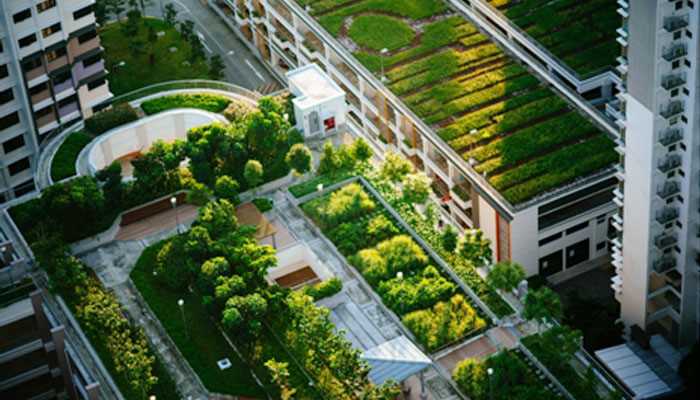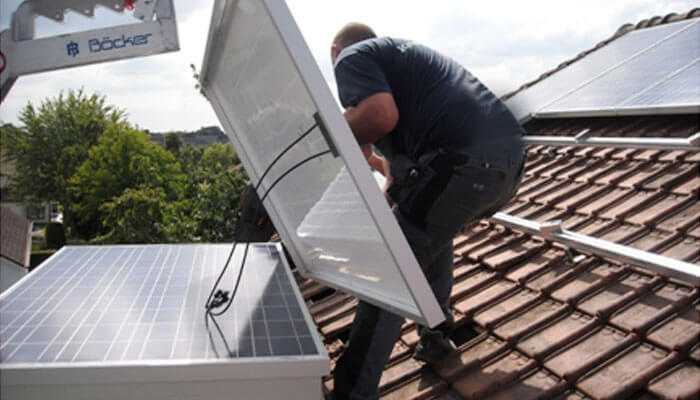In today’s rapidly evolving business landscape, sustainability isn’t just a buzzword—it’s a strategic imperative. As businesses worldwide recognize the importance of reducing their environmental footprint, eco-friendly roofing solutions are emerging as a key component of sustainable building practices.
From reducing energy consumption to minimizing waste and promoting biodiversity, environmentally conscious roofing options from experts like Austin Roof Repair offer numerous benefits for both businesses and the planet. In this article, we’ll explore some innovative eco-friendly roofing solutions that are empowering businesses to embrace sustainability and make a positive impact on the environment.
Green Roofs: Bringing Nature to New Heights
Imagine a rooftop oasis teeming with lush vegetation, vibrant flowers, and buzzing pollinators—a green roof offers precisely that. Green roofs, also known as living roofs or vegetative roofs, consist of a waterproof membrane, a drainage system, and layers of soil or growing medium where plants can thrive.
Not only do green roofs enhance the aesthetic appeal and provide natural insulation, but they also offer environmental benefits such as reducing the urban heat island effect, capturing rainwater runoff, and improving air quality by absorbing carbon dioxide and filtering pollutants.
Businesses can transform their rooftops into green havens, creating inviting spaces for employees, customers, and the community to enjoy while demonstrating a commitment to sustainability.
Cool Roofs: Keeping Things Cool with Reflective Surfaces
In urban areas where buildings dominate the landscape, heat absorption from traditional roofing materials can exacerbate temperature extremes and contribute to energy demand for cooling. Cool roofs offer a solution by incorporating reflective surfaces that bounce solar radiation back into the atmosphere, reducing heat absorption and lowering indoor temperatures.
By keeping buildings cooler, cool roofs reduce the need for air conditioning, thereby decreasing energy consumption and greenhouse gas emissions. Additionally, cool roofs can extend the lifespan of roofing materials by reducing thermal stress and UV exposure. For businesses located in warm climates or seeking to improve energy efficiency, cool roofing presents a cost-effective and environmentally friendly solution.
Solar Roofing: Harnessing the Power of the Sun
Solar energy is a renewable resource with tremendous potential to power commercial buildings sustainably. Solar roofing systems integrate photovoltaic (PV) panels directly into the roof structure, allowing businesses to generate clean, renewable electricity on-site. By harnessing the power of the sun, businesses can reduce their reliance on fossil fuels, lower energy costs, and shrink their carbon footprint.
With advancements in solar technology and innovative financing options such as solar leasing and power purchase agreements (PPAs), installing solar panels has become more accessible and affordable for businesses of all sizes. By investing in eco-friendly roofing solutions, businesses can not only save money but also contribute to a greener, more sustainable future.
Recycled and Sustainable Roofing Materials: Closing the Loop
Traditional roofing materials such as asphalt shingles and metal panels often end up in landfills at the end of their lifespan, contributing to waste and environmental degradation. In contrast, recycled and sustainable roofing materials offer a more environmentally responsible alternative. From recycled rubber and plastic tiles to reclaimed wood shakes and sustainable slate, businesses have a wide range of eco-friendly options to choose from.
These materials not only minimize waste but also reduce the demand for virgin resources and support the circular economy. By selecting recycled and sustainable roofing materials, businesses can demonstrate their commitment to environmental stewardship while enhancing the durability and resilience of their roofs.
Rainwater Harvesting Systems: Capturing Nature’s Bounty
Water scarcity is a pressing global challenge, making efficient water management a priority for businesses seeking to minimize their environmental impact. Rainwater harvesting systems collect and store rainwater runoff from rooftops for non-potable uses such as irrigation, toilet flushing, and cooling tower makeup water.
By capturing rainwater onsite, businesses can reduce reliance on municipal water supplies, conserve freshwater resources, and mitigate stormwater runoff, which can contribute to urban flooding and water pollution. The size and design of the roof determines the amount of rainwater that can be harvested. Rainwater harvesting systems can be integrated with green roofs or installed separately, offering businesses a sustainable water management solution that aligns with their environmental goals.
Once stored, rainwater can be distributed for various non-potable uses such as irrigation, toilet flushing, washing vehicles, or cooling tower makeup water. Distribution systems may include pumps, pipes, valves, and controls to deliver harvested rainwater where it’s needed.
Final Thoughts
Eco-friendly roofing solutions offer businesses an opportunity to align their operations with sustainable practices while reaping numerous benefits, including energy savings, cost reduction, and environmental stewardship.
By embracing green roofs, solar roofing, cool roofs, recycled materials, and rainwater harvesting systems, businesses can demonstrate their commitment to sustainability, enhance their brand reputation, and contribute to a healthier, more resilient planet.
As we strive to build a sustainable future, investing in eco-friendly roofing solutions is not just a choice—it’s a smart business decision that benefits both the bottom line and the environment.



